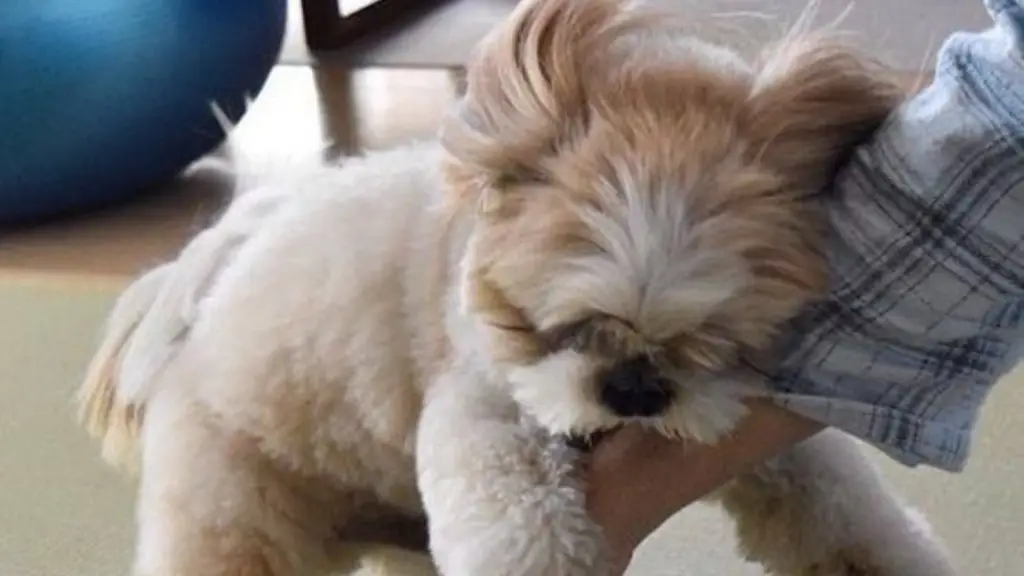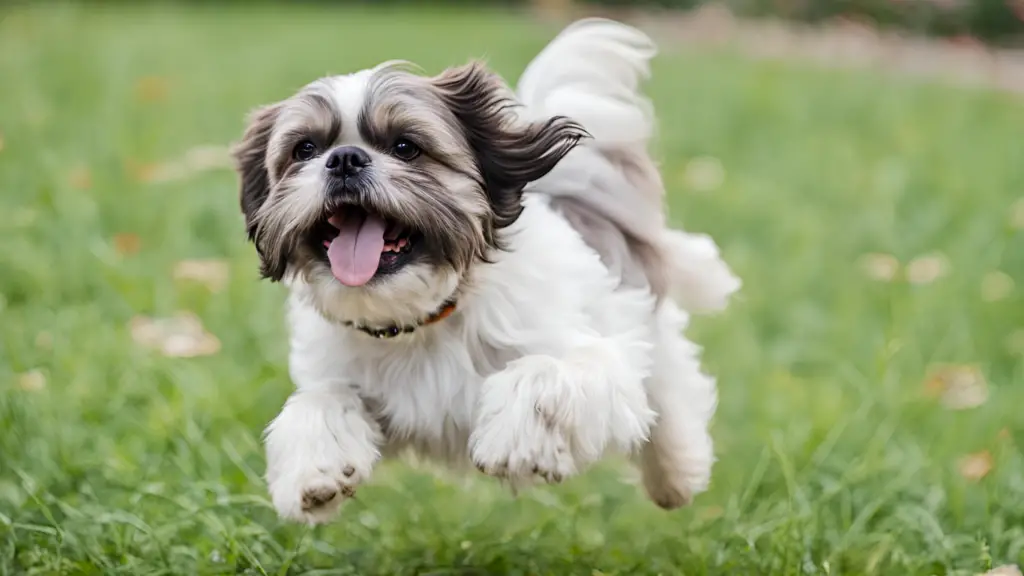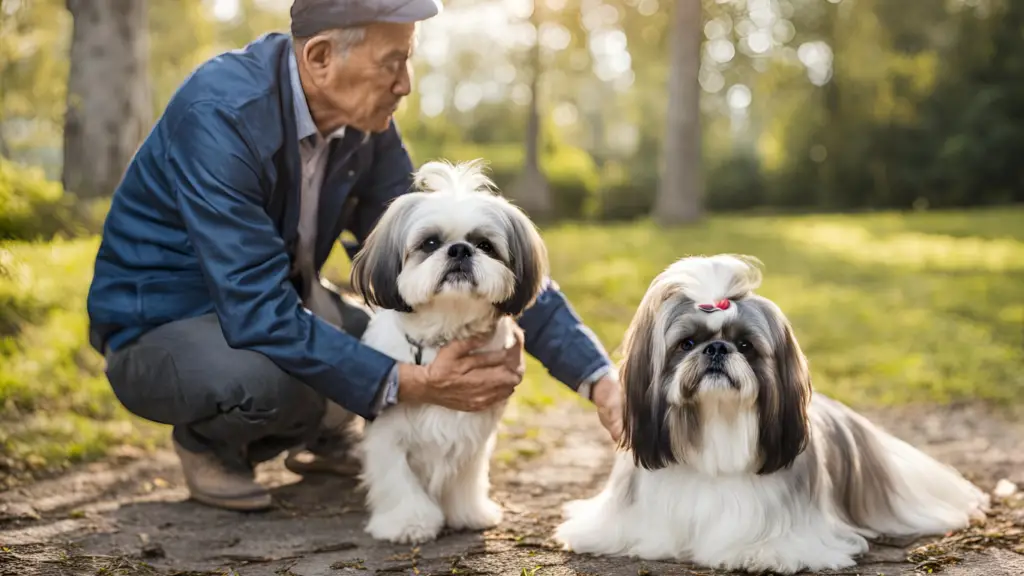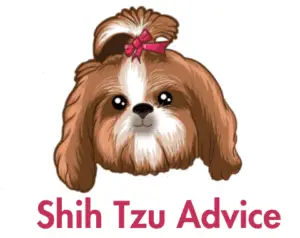
Understanding your Shih Tzu’s body language is crucial for fostering a strong, positive relationship with your furry companion. Shih Tzus are expressive dogs with a wide range of behaviors and signals that can reveal their emotions, needs, and reactions. By learning to interpret these cues, you can enhance communication with your Shih Tzu, ensuring their well-being and strengthening your bond. This comprehensive guide will delve into the various aspects of Shih Tzu body language, offering insights into what your dog might be trying to tell you through their actions and expressions.

The Importance of Understanding Shih Tzu Body Language
Recognizing and interpreting your Shih Tzu’s body language is essential for several reasons. First and foremost, it helps you understand your dog’s emotional state, which can prevent misunderstandings and potential behavioral issues. Shih Tzus, like all dogs, communicate through a combination of physical signals, including posture, facial expressions, and tail movements.

Understanding these signals allows you to respond appropriately to your Shih Tzu’s needs. For instance, if your Shih Tzu is anxious, you can take steps to alleviate their stress. Conversely, recognizing signs of happiness and excitement can help you reinforce positive behaviors. Being attuned to your Shih Tzu’s body language also strengthens your bond, as it shows that you are attentive and responsive to their feelings.
Moreover, Shih Tzus, with their unique physical characteristics, have specific ways of expressing themselves. Their distinctive facial expressions and body movements can convey a wide range of emotions, from contentment to fear. Decoding these signals helps you ensure that your Shih Tzu is comfortable and happy in their environment.

Effective communication with your Shih Tzu also contributes to their overall well-being. By understanding their body language, you can address their needs more effectively, leading to a healthier and more harmonious relationship.
Reading Facial Expressions: What’s Behind Those Eyes
Facial expressions are a crucial component of Shih Tzu body language. Your dog’s face can provide valuable insights into their emotional state and intentions. Shih Tzus have expressive faces that can reveal a lot about how they are feeling at any given moment.

One of the most important facial expressions to recognize is the relaxed or happy face. When a Shih Tzu is content, their eyes are soft, and their mouth may be slightly open with a relaxed expression. A relaxed face indicates that your dog is comfortable and at ease in their current environment.
When your Shih Tzu is anxious or scared, their facial expressions can change significantly. They may have wide, round eyes with raised eyebrows, and their mouth might be closed or slightly curled. An anxious or fearful expression can also include showing the whites of their eyes, which is a sign that your Shih Tzu is feeling stressed or uneasy.

Aggression or irritation can also be conveyed through facial expressions. A Shih Tzu showing aggression may have a furrowed brow, a wrinkled nose, and a tense mouth. Their eyes might be narrowed, and they may show their teeth. Recognizing these signs is important for addressing any potential issues before they escalate.
Understanding your Shih Tzu’s facial expressions involves paying attention to subtle changes in their features. Regular observation of how their face changes in different situations will help you better interpret their emotional state and respond accordingly.
Tail Movements and What They Mean

The tail is one of the most expressive parts of a Shih Tzu’s body, and its movements can convey a wide range of emotions. By observing your Shih Tzu’s tail, you can gain valuable insights into their feelings and reactions.
A wagging tail is often associated with happiness and excitement. When your Shih Tzu’s tail is wagging energetically, it typically means they are feeling joyful and playful. However, the speed and height of the wag can provide additional context. A slow, low wag may indicate that your Shih Tzu is feeling uncertain or submissive, while a high, fast wag usually signifies enthusiasm and eagerness.

A tail held high and stiff can indicate alertness or excitement, but it can also be a sign of dominance or aggression. If your Shih Tzu’s tail is raised and rigid, it’s important to consider their overall body posture and behavior to accurately interpret their feelings.
A tail tucked between the legs is a common sign of fear or submission. When a Shih Tzu feels scared or threatened, they may tuck their tail as a way of signaling that they are not a threat. This body language is often accompanied by other signs of anxiety, such as cowering or avoiding eye contact.

Understanding the context of your Shih Tzu’s tail movements is crucial for interpreting their emotions. Tail wagging alone may not always provide a complete picture, so consider other body language cues to get a clearer understanding of how your Shih Tzu is feeling.
The Significance of Posture in Shih Tzu Communication
Posture plays a significant role in how Shih Tzus communicate with each other and with humans. The way your Shih Tzu holds their body can reveal a lot about their emotional state and intentions.

A relaxed and loose posture generally indicates that your Shih Tzu is comfortable and at ease. When your dog is lying down with their legs extended and their body relaxed, it signifies that they are feeling safe and content. This posture is often seen when your Shih Tzu is resting or enjoying a calm moment.
A tense or stiff posture can be a sign of discomfort or anxiety. If your Shih Tzu is standing with their body rigid and their tail held high, it may indicate that they are feeling stressed or alert. A stiff posture can also be a sign of aggression, especially if accompanied by other aggressive behaviors like growling or baring teeth.

A submissive posture includes behaviors such as lowering the body, tucking the tail, and avoiding eye contact. This body language indicates that your Shih Tzu is feeling submissive or intimidated. Submissive posture is often seen in interactions with other dogs or humans when your Shih Tzu is trying to avoid conflict.
Understanding your Shih Tzu’s posture in different situations will help you better interpret their emotions and respond appropriately. Pay attention to how their body language changes in various contexts, such as when meeting new people or encountering unfamiliar objects.
Ear and Eye Movements: Decoding Subtle Cues

Ears and eyes are expressive features in Shih Tzus that can provide important clues about their emotional state. By observing these subtle cues, you can gain a better understanding of what your dog is trying to communicate.
Ear position can indicate a range of emotions. When your Shih Tzu’s ears are perked up and facing forward, it generally means they are alert and interested. This ear position is often seen when your dog is curious or excited about something. Conversely, ears held back against the head can indicate fear or submission. This position is usually accompanied by other signs of anxiety, such as a tucked tail or a lowered body posture.

Eye movements and expressions are also crucial in understanding your Shih Tzu’s emotions. Soft, relaxed eyes typically indicate contentment and comfort. When your Shih Tzu’s eyes are wide and round, it may be a sign of excitement or curiosity. Squinting or half-closed eyes can suggest relaxation or sleepiness.
Averted gaze or looking away can indicate that your Shih Tzu is feeling stressed or unsure. If your dog avoids eye contact, it might be a sign that they are feeling uncomfortable or submissive. Direct eye contact can sometimes be perceived as a challenge or threat, so it’s important to consider the context in which your Shih Tzu is making eye contact.

Paying attention to these subtle cues will help you better understand your Shih Tzu’s emotions and respond to their needs. Combining observations of ear and eye movements with other body language signals will provide a more comprehensive understanding of your dog’s feelings.
The Role of Vocalizations in Shih Tzu Communication
While body language is a key component of Shih Tzu communication, vocalizations also play an important role. Understanding what different sounds mean can enhance your ability to interpret your Shih Tzu’s needs and emotions.

Barking is one of the most common vocalizations in Shih Tzus. The meaning of barking can vary depending on the context and the tone. Excited barking often occurs when your Shih Tzu is happy or eager to play. Alert barking usually happens when your dog perceives something unusual or wants to alert you to potential threats. Persistent or excessive barking might indicate boredom or anxiety.
Whining or whimpering can be a sign of discomfort, anxiety, or a need for attention. If your Shih Tzu is whining, it’s important to assess their environment and see if there is something causing them distress. Whining can also indicate a desire for companionship or a need to go outside.

Growling is often associated with aggression or discomfort. A low, rumbling growl can signal that your Shih Tzu is feeling threatened or is trying to communicate their displeasure. It’s important to pay attention to the context and other body language cues when interpreting growling.
Understanding the context of your Shih Tzu’s vocalizations is crucial for accurate interpretation. Combine their sounds with their body language and environment to get a clearer picture of what your dog is trying to communicate.
Recognizing and Addressing Behavioral Changes

Behavioral changes in Shih Tzus can be significant indicators of their emotional state and overall well-being. By recognizing these changes, you can address potential issues and ensure that your dog is happy and healthy.
Sudden changes in behavior, such as increased aggression, withdrawal, or excessive barking, may indicate underlying issues. These changes could be due to stress, discomfort, or health problems. If you notice any significant behavioral changes, it’s important to consult with a veterinarian to rule out medical conditions.

Changes in body language, such as a shift from relaxed to tense posture, can also signal changes in your Shih Tzu’s emotional state. Observing these changes helps you identify potential sources of stress or discomfort and take appropriate action.
Addressing behavioral issues involves understanding the root cause of the problem and implementing appropriate solutions. For instance, if your Shih Tzu is anxious, providing a calm and stable environment, along with positive reinforcement, can help alleviate their stress.

Monitoring your Shih Tzu’s behavior regularly and making adjustments as needed will contribute to their overall well-being. Ensuring that your dog’s needs are met and addressing any issues promptly will help maintain a happy and healthy relationship.
Conclusion
Decoding your Shih Tzu’s body language is an essential skill for any dog owner. By understanding the various signals your dog uses to communicate, you can respond appropriately to their needs and emotions, leading to a stronger and more positive bond.
Recognizing facial expressions, tail movements, and posture helps you interpret your Shih Tzu’s emotional state and respond to their needs effectively. Understanding subtle cues like ear and eye movements, vocalizations, and behavioral changes provides additional insights into your dog’s feelings.

Patience and observation are key when learning to decode your Shih Tzu’s body language. By paying close attention to their actions and expressions, you can create a supportive and responsive environment for your furry companion.
Ultimately, enhancing communication with your Shih Tzu through understanding their body language will lead to a more fulfilling and harmonious relationship. Enjoy the process of learning about your dog’s unique ways of expressing themselves and cherish the deep connection you share.
Your Shih Tzu’s well-being is reflected in their ability to communicate effectively, and your attentiveness to their needs will ensure a happy and healthy life for your beloved pet.


